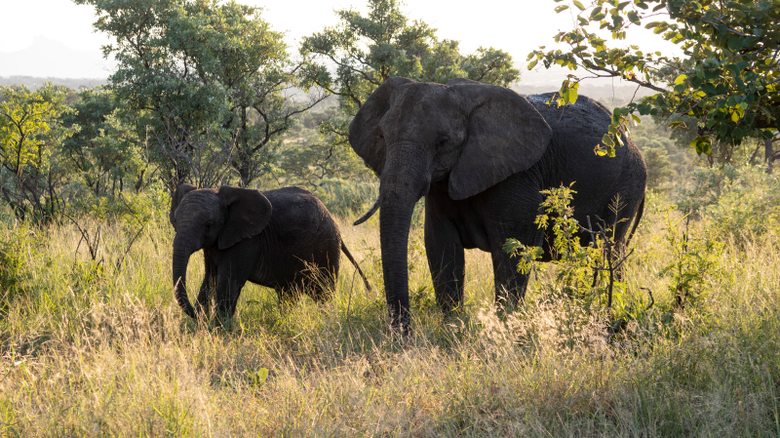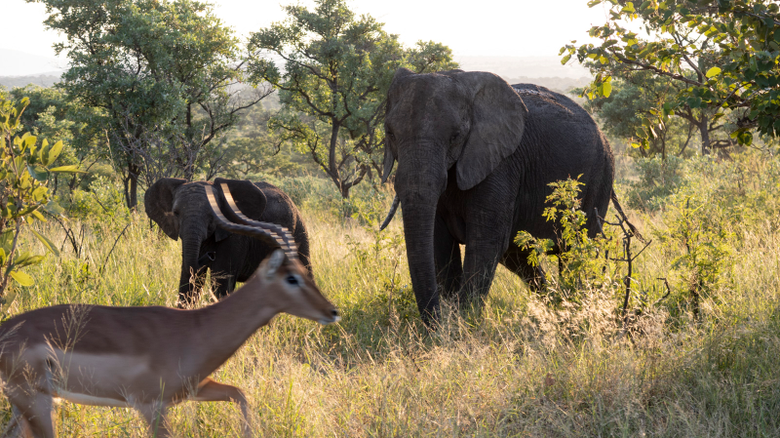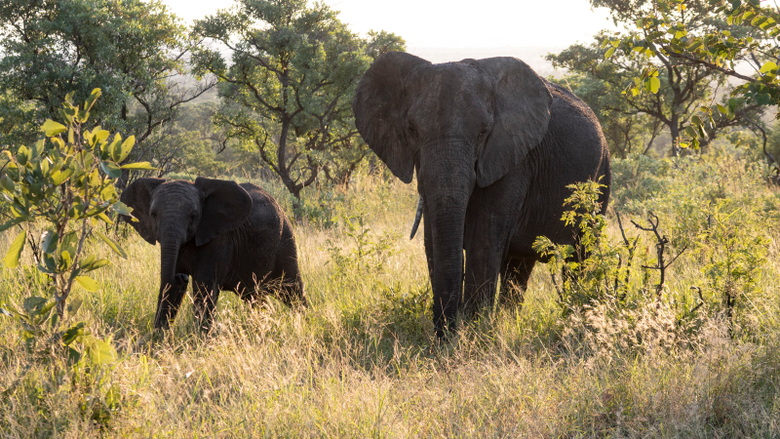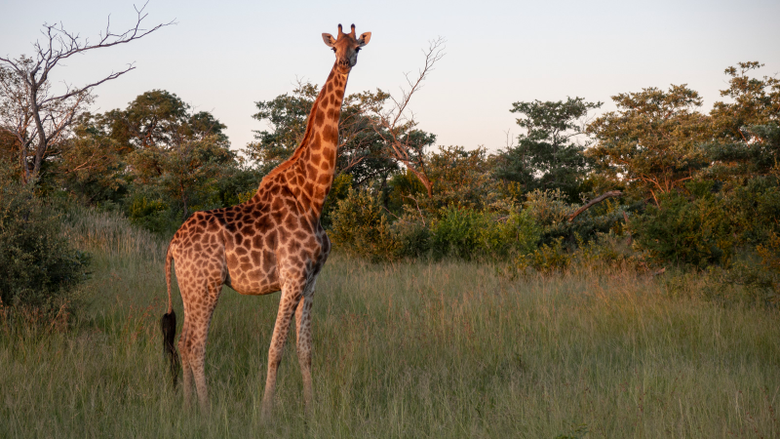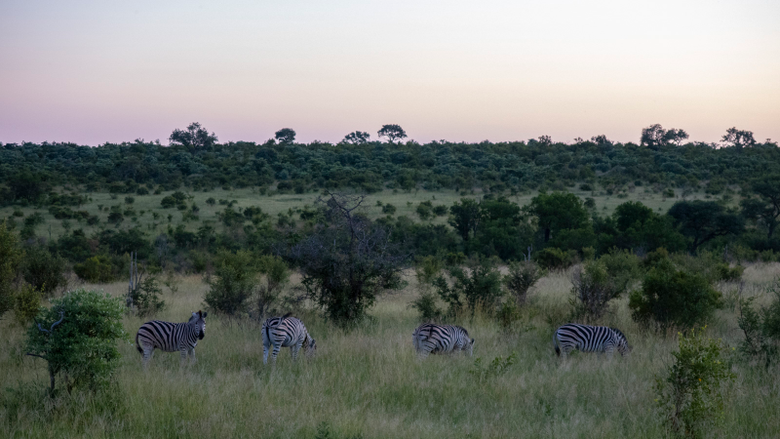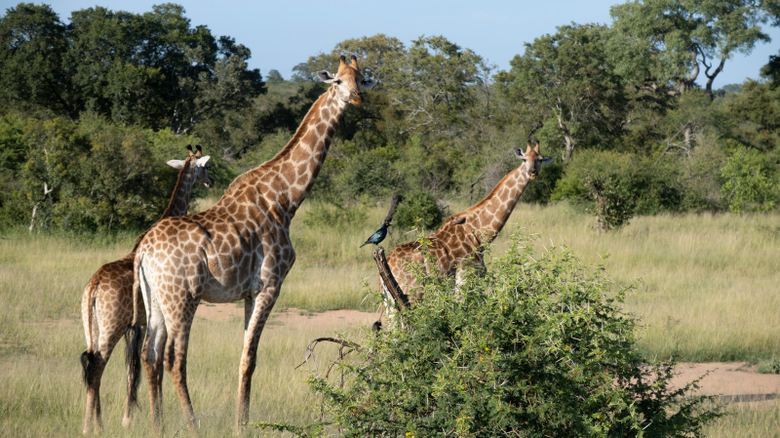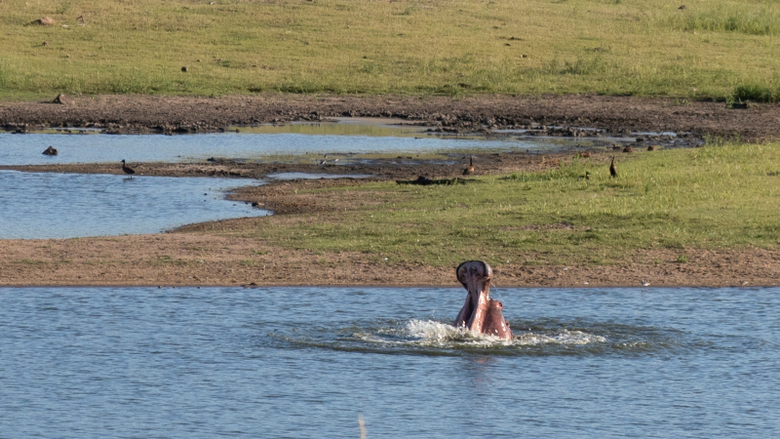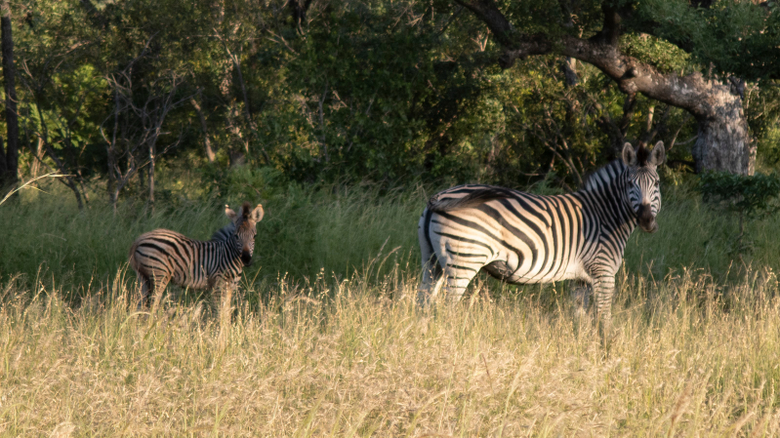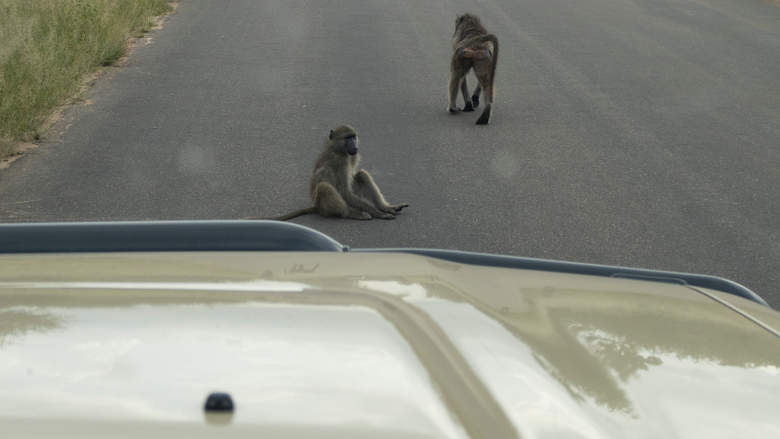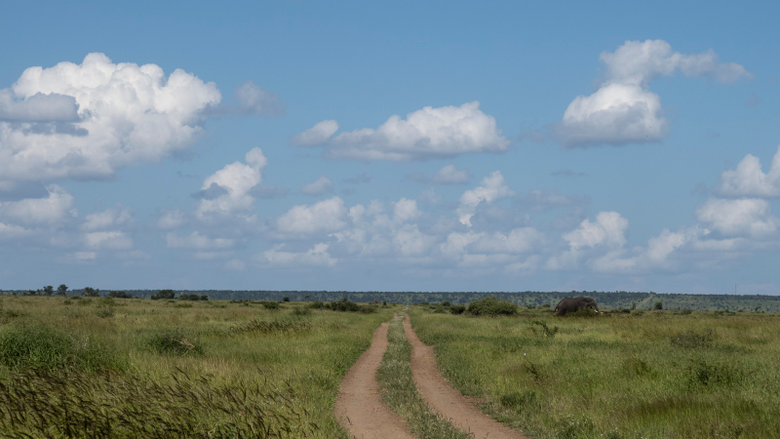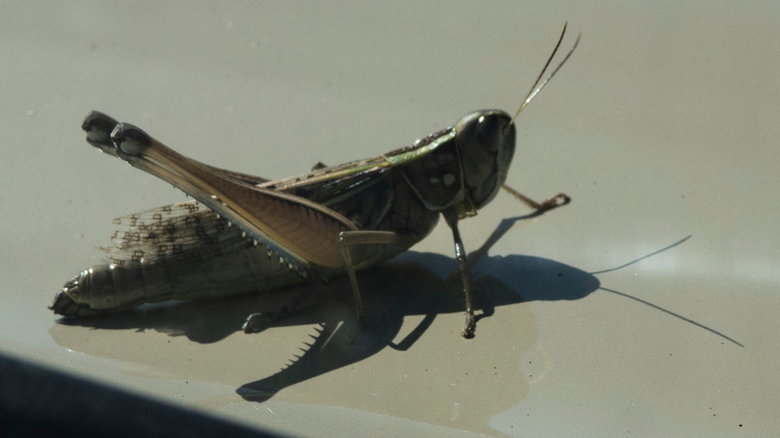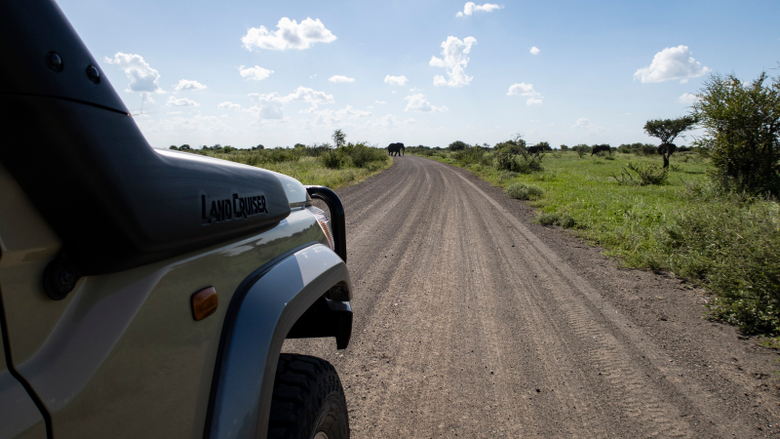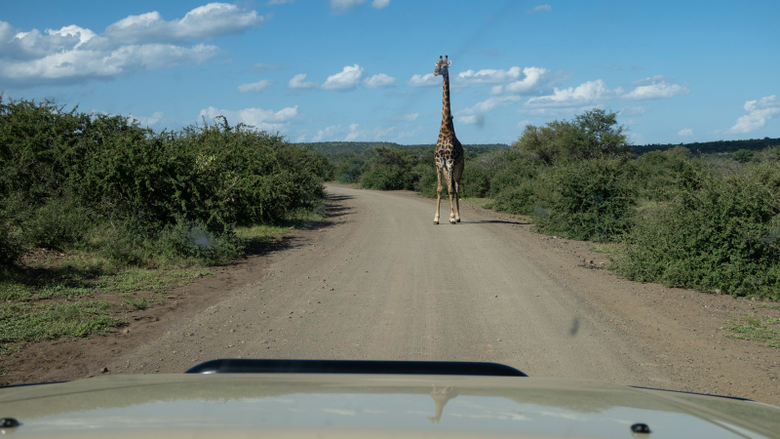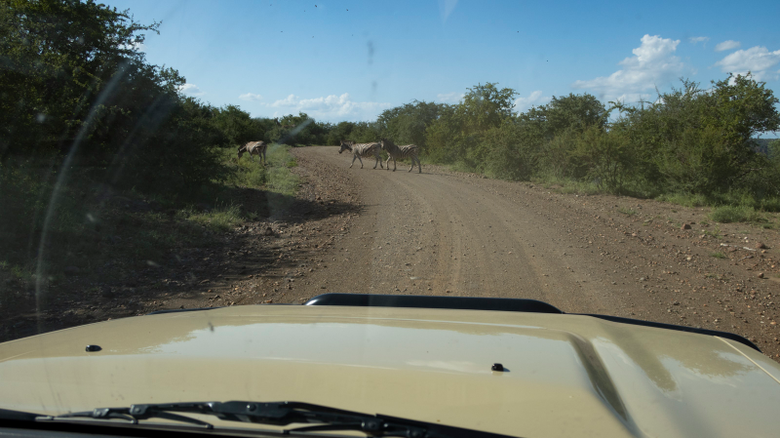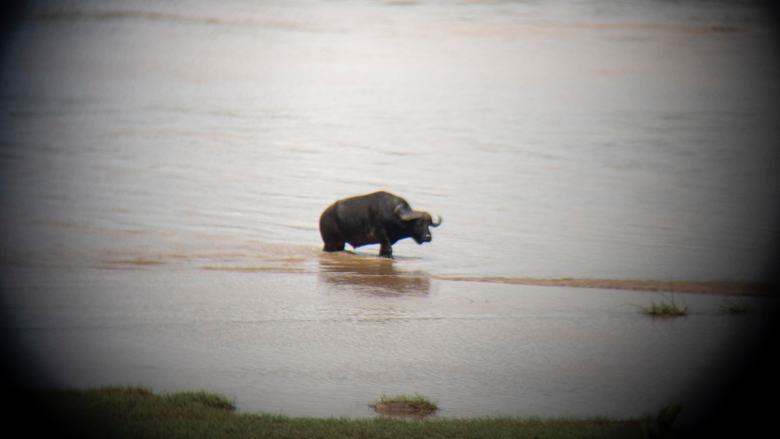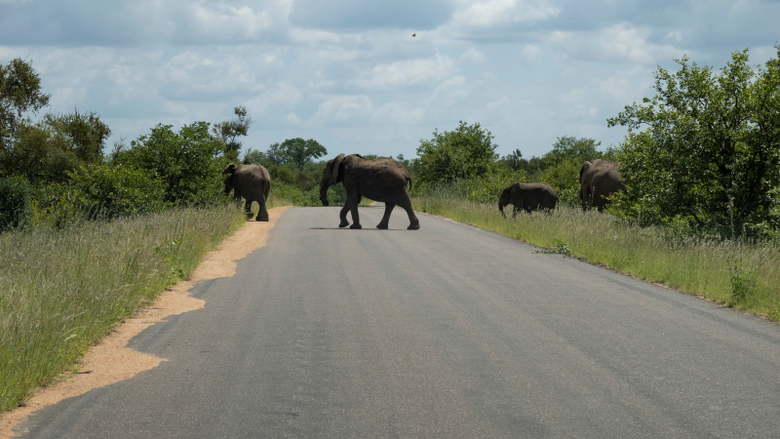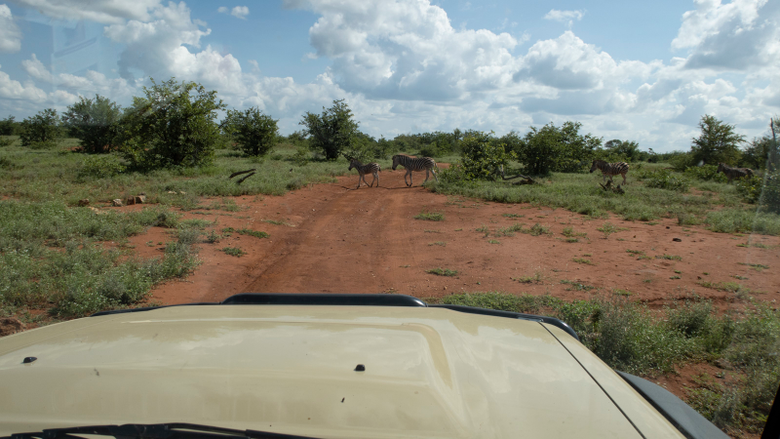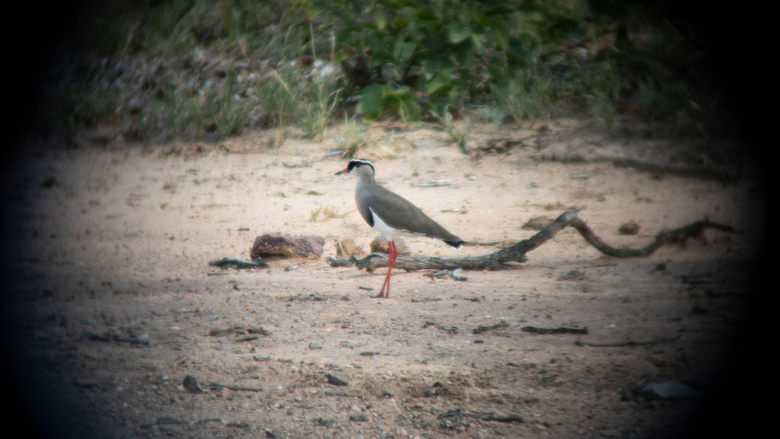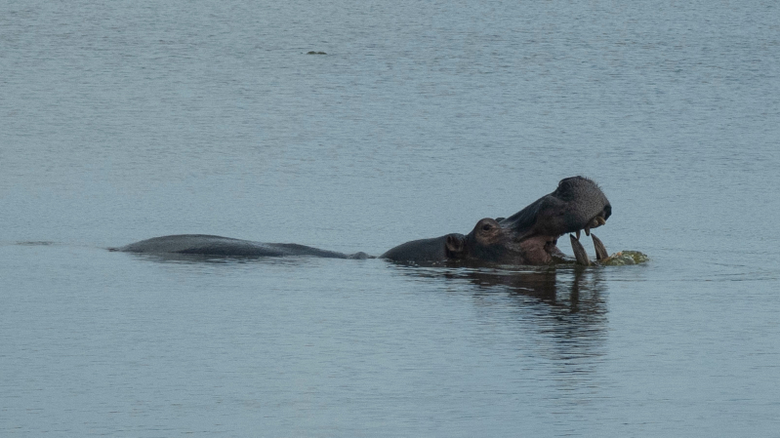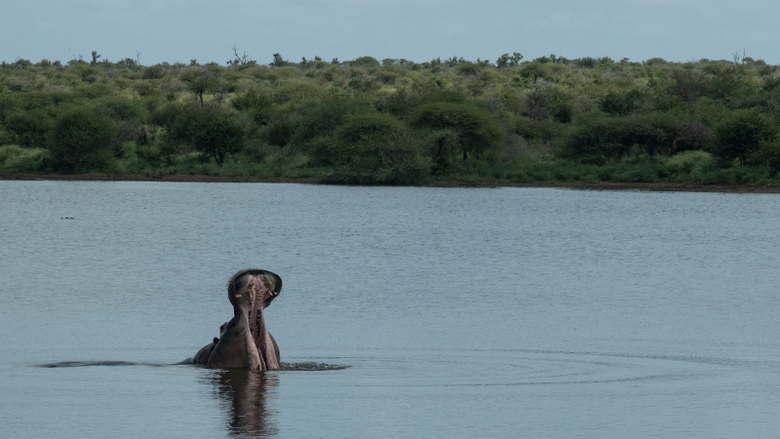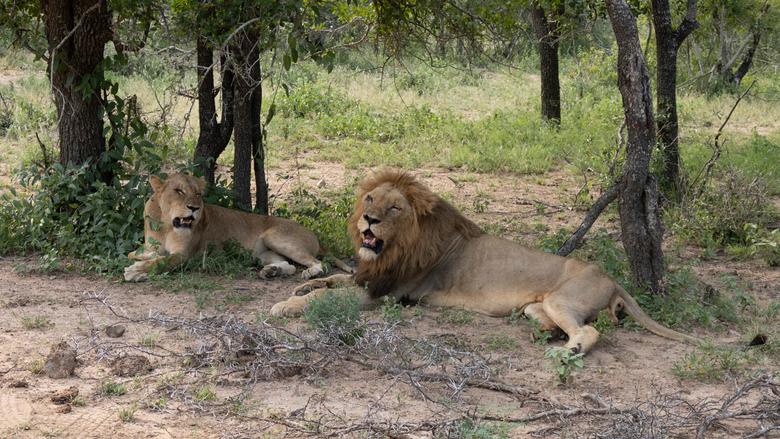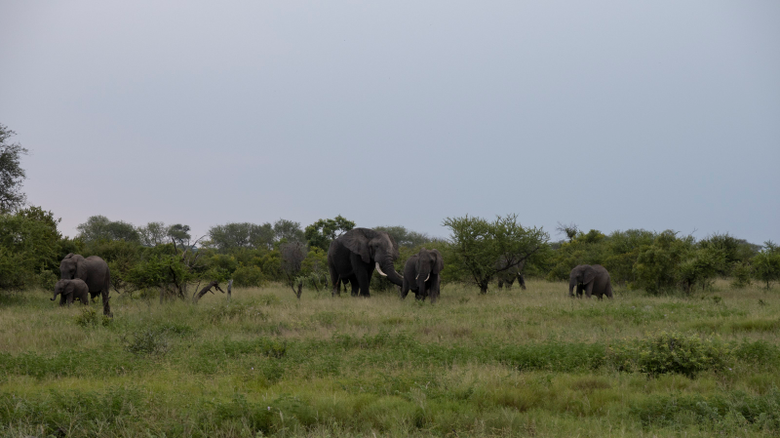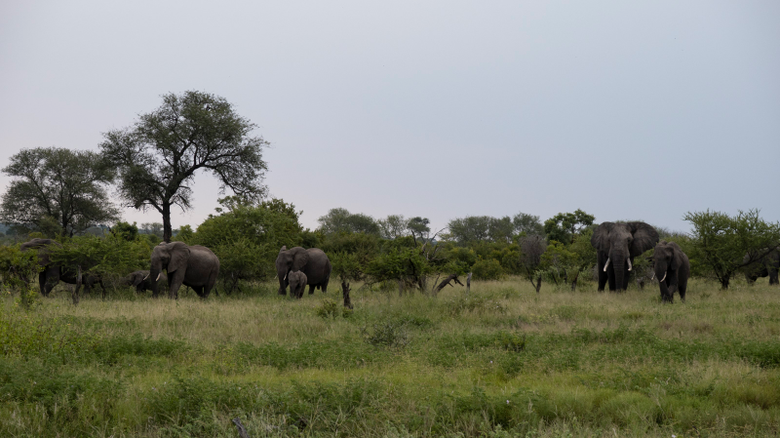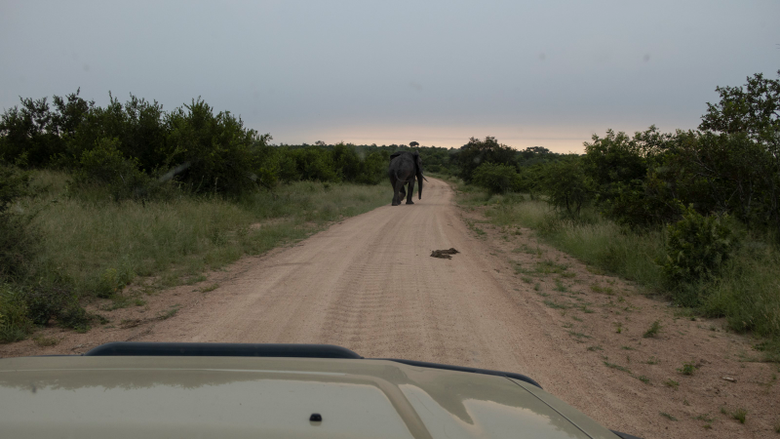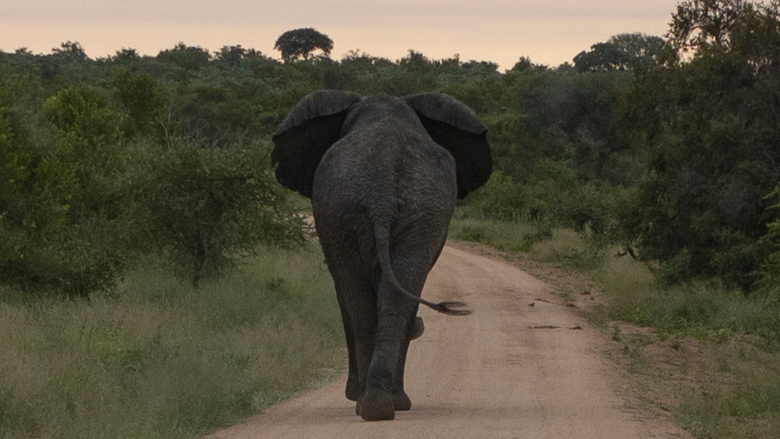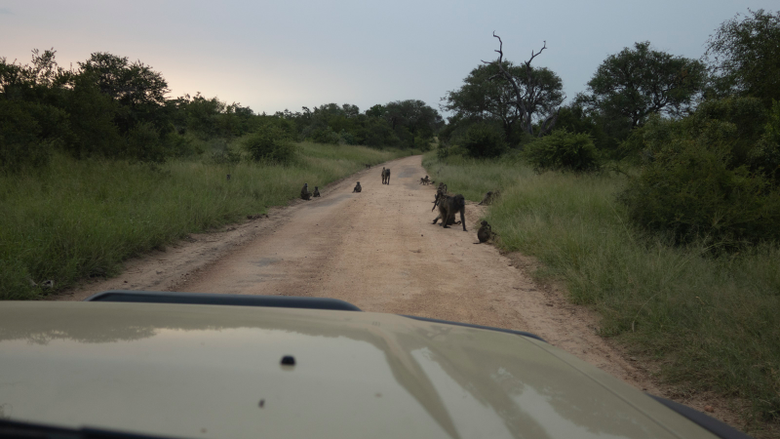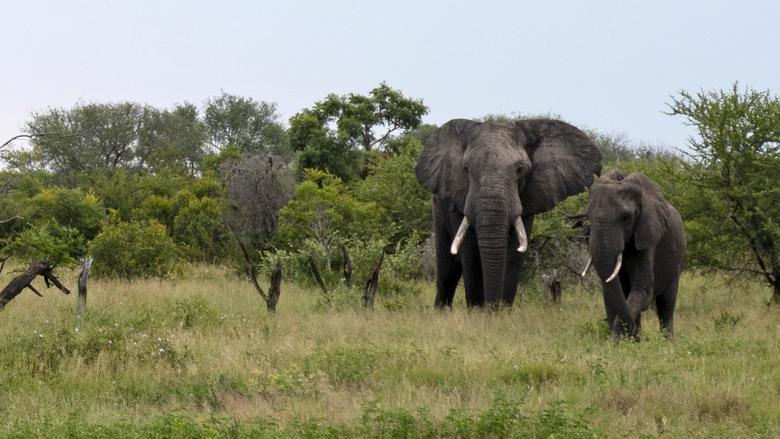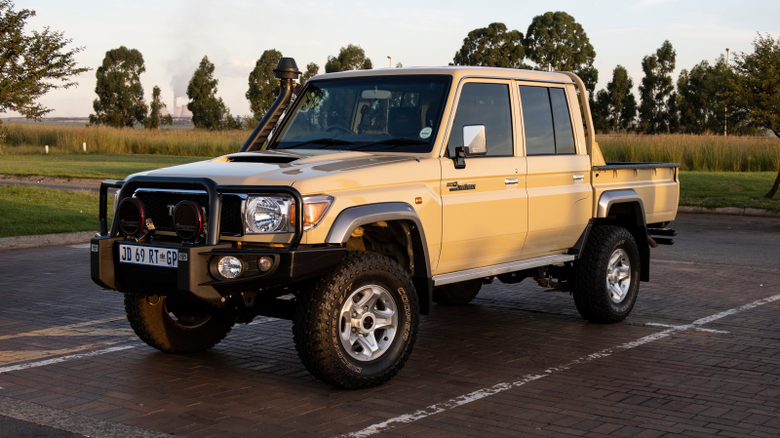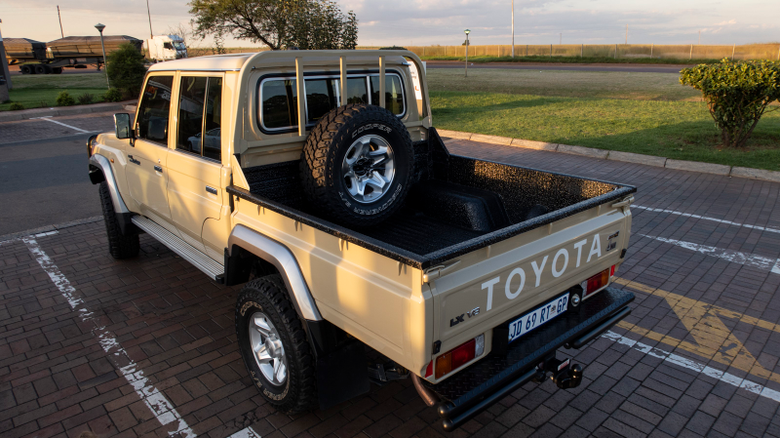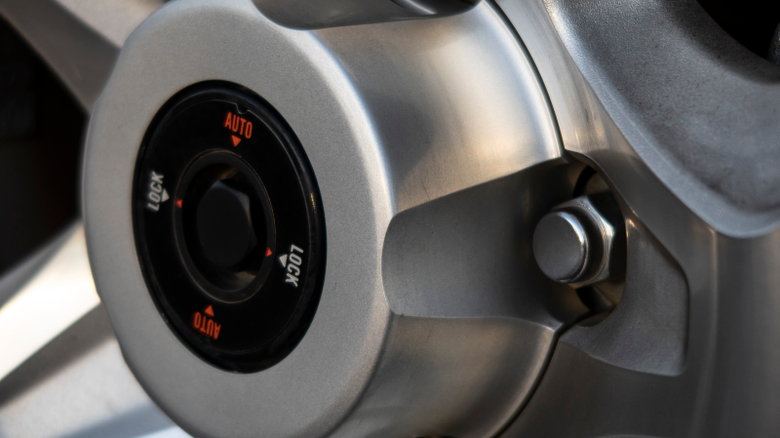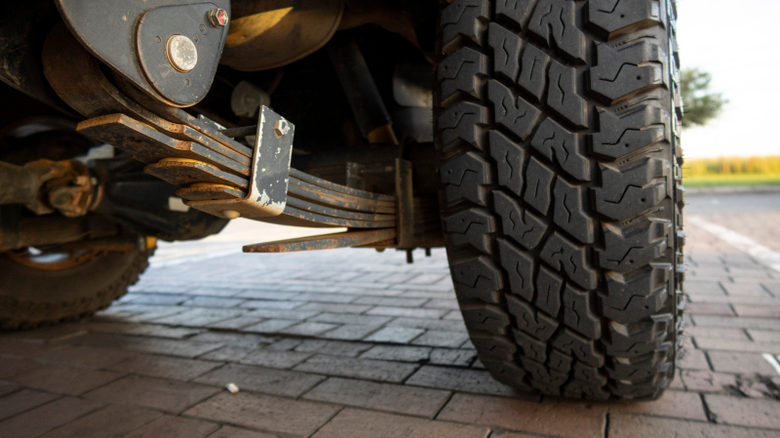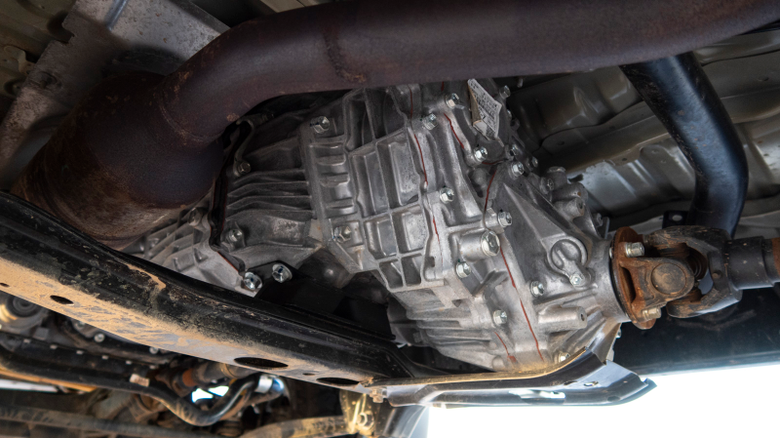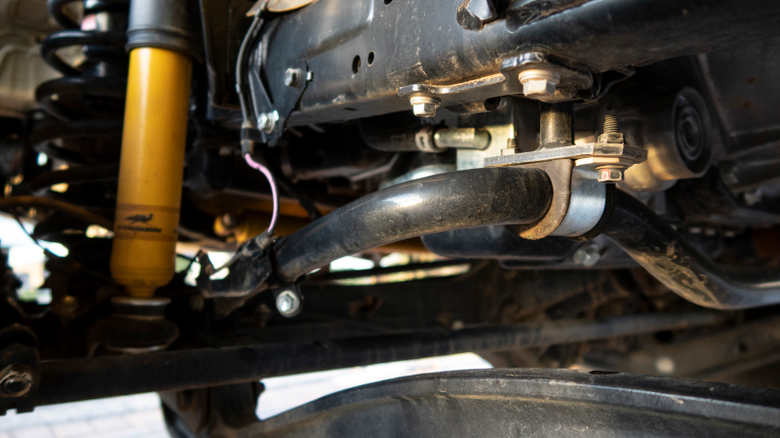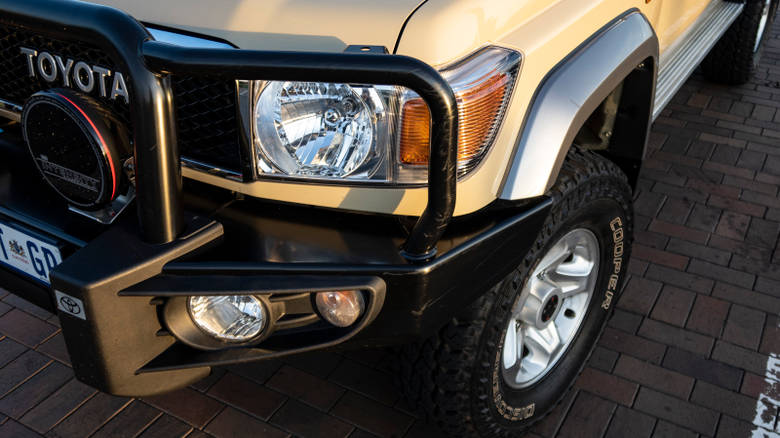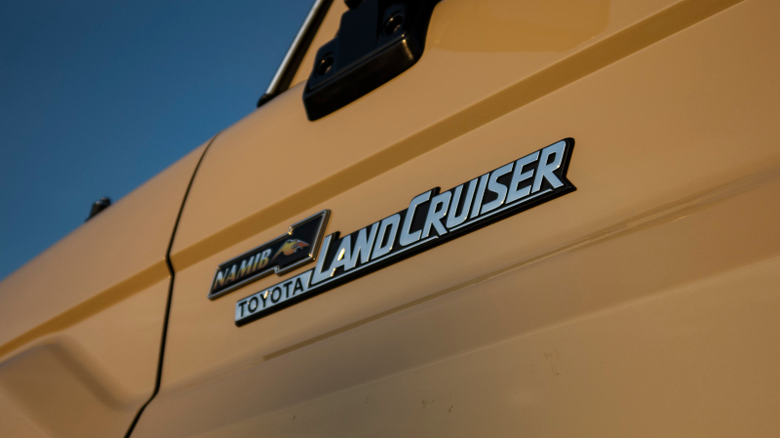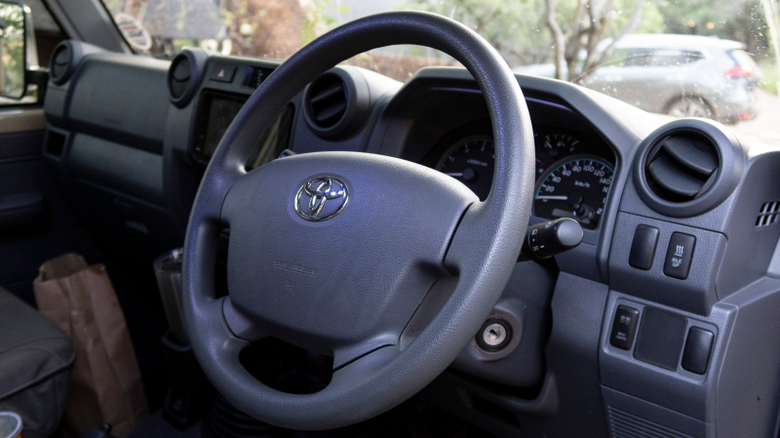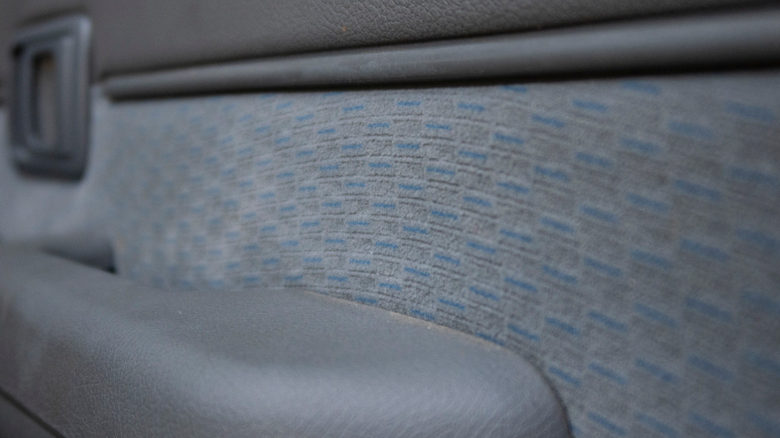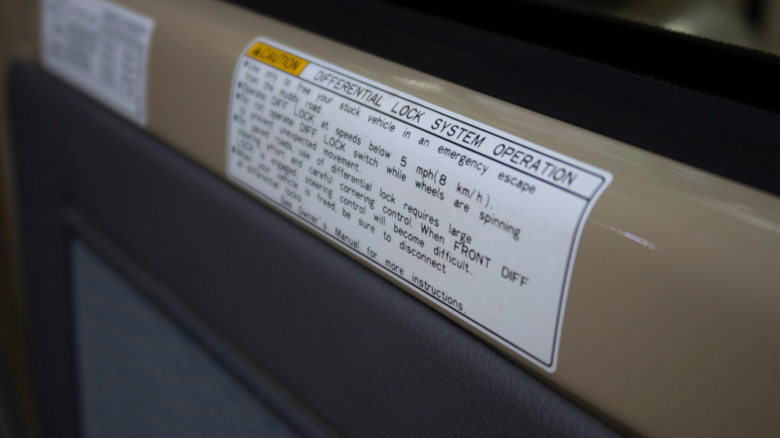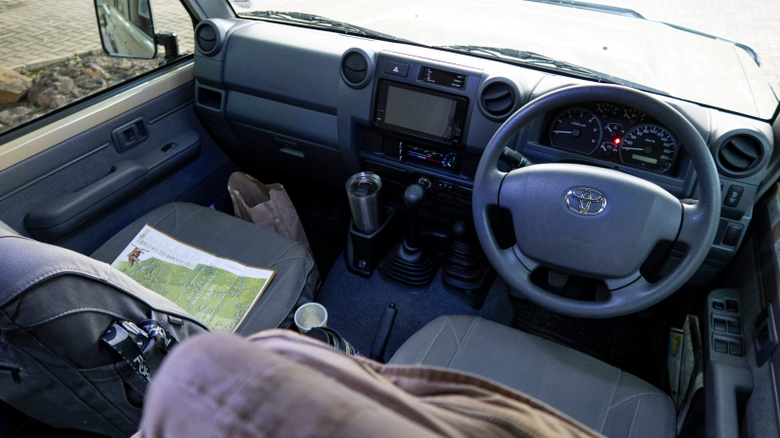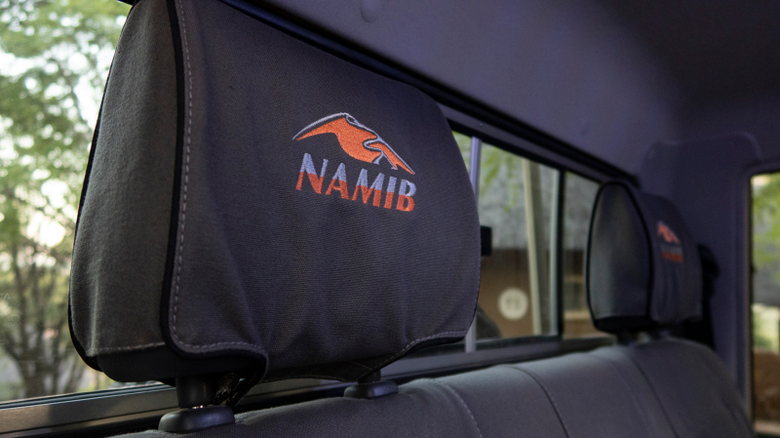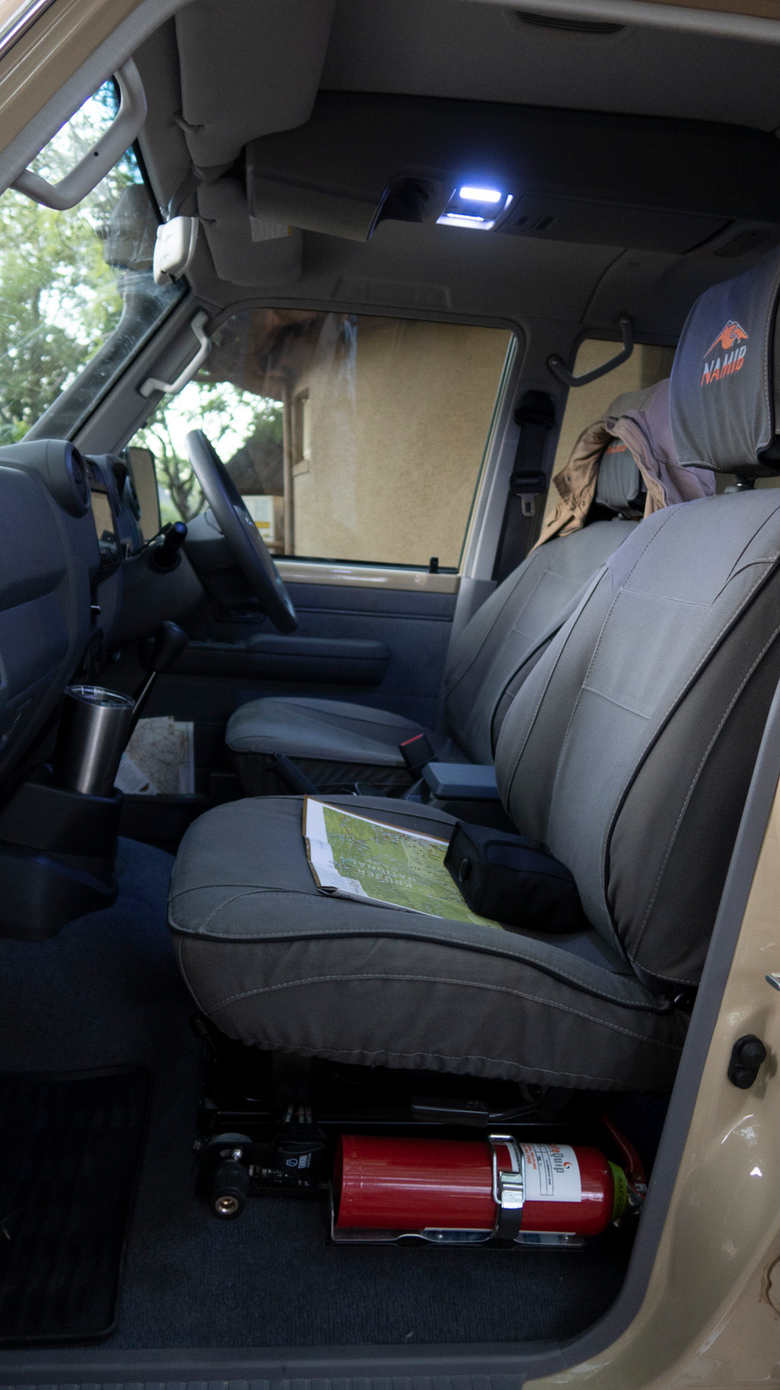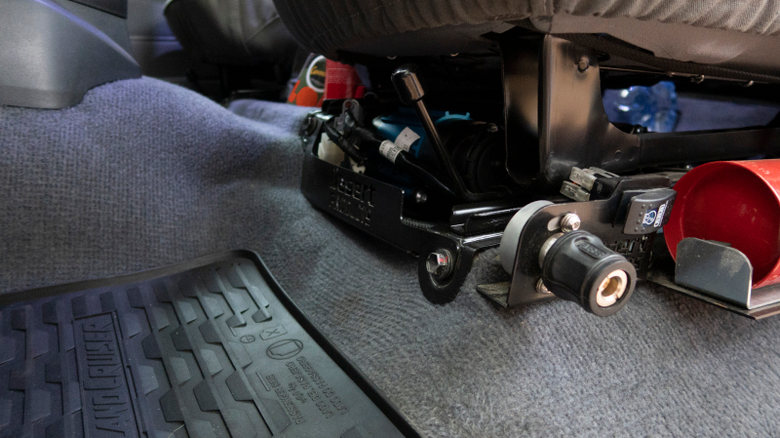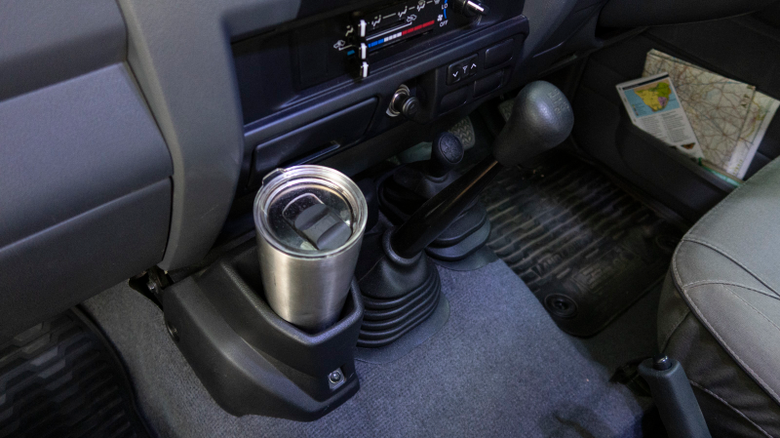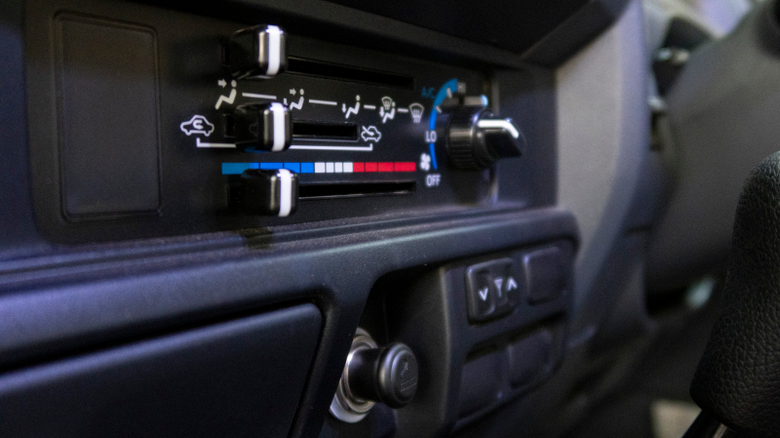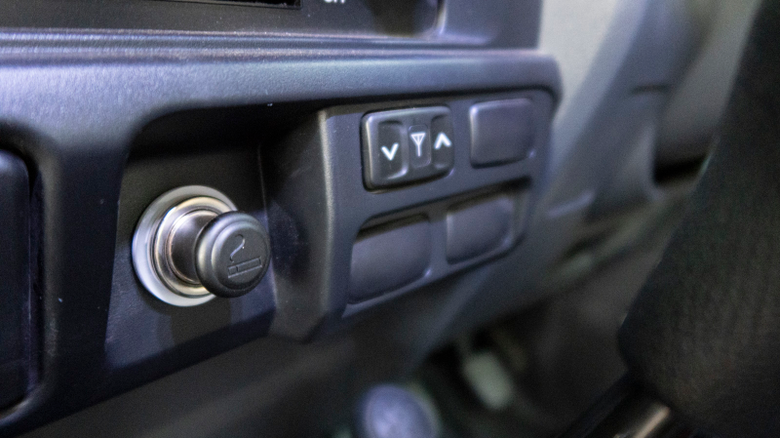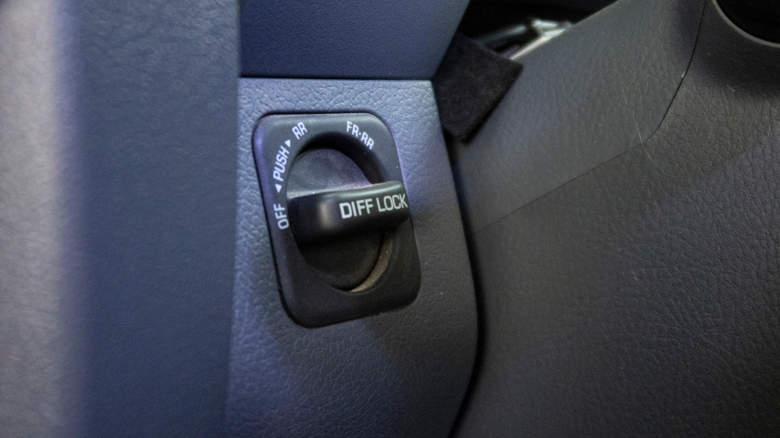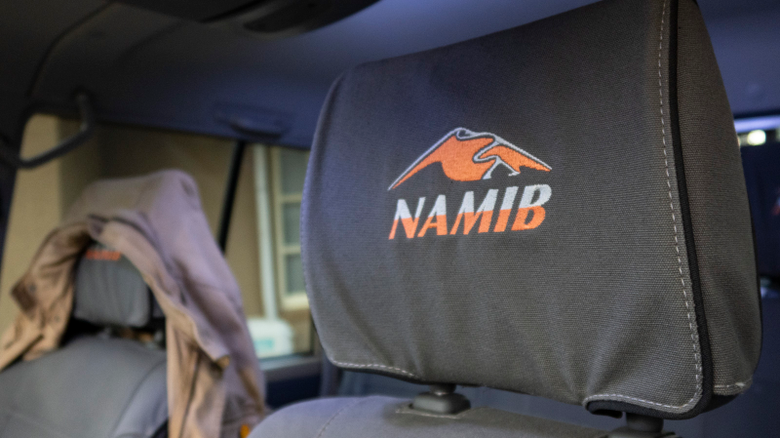1,000 Miles In Africa With The Ultimate Toyota Land Cruiser
Pickup trucks may feel like American institutions, but their purest form in 2020 is actually Japanese. Here's what it was like driving 1,000 South African miles in a Toyota Land Cruiser 79-Series Namib Edition, a vehicle we should sing ballads about when we finally lay flowers on the grave of fossil fuels. Also, if you think elephants look large in pictures, wait 'til you've got one in your windshield.
(Full Disclosure: Land Rover arranged my travel from Los Angeles to Namibia to check out the 2020 Defender back in February. That trip included a layover in Johannesburg, and Land Rover's agent didn't have a problem with my request to make that layover a week instead of an hour. Then I asked somebody at Toyota South Africa if I could borrow one of its vehicles while I was in town. The company's reps very kindly obliged. I've been saving this story for a special occasion. May it offer some joy in escapism.)
Welcome to Africa.
I strode out of the terminal at Johannesburg's huge airport into a wall of wet heat. It was late in the day, early in 2020, South Africa's summertime. As I stood at the curb wondering if I'd just been swindled by an ATM with an exorbitant currency exchange fee (yes), I scrolled through my emails trying to figure out where my contact at Toyota South Africa had left a car for me.
A few weeks prior I'd convinced them to loan me a Land Cruiser, but we never specified which version. Not wanting to push my luck, I'd just agreed giddily and hoped I'd get a good one.
When I found the thing, towering over rental-spec economy cars and station wagons and everything else in the airport garage, my jaw and luggage hit the deck in unison.

The Toyota Land Cruiser 79-Series Namib Edition isn't just a good one, it's the ultimate factory safari machine. This spec has a big turbodiesel V8, manual transmission, two solid axles, front and rear locking differentials, an ARB bumper, snorkel, four-wheel drive that's activated with a lever, no driver aids, no traction control. Its only creature comforts are a set of canvas seat covers and a magnificent cupholder.
For those of you who aren't into trucks and would like a little context: These are all the features that off-road enthusiasts put on their Christmas lists every year. Well, those plus an onboard air compressor, high-intensity spotlights and mud terrain tires. This Cruiser had those too.
And. And. The loaner truck I found waiting for me was sprayed in the perfect shade of "Let's Go Look For Elephants" tan. I threw my junk on the back seat and headed east. To look for elephants.
A few days later not only had I succeeded at locating loxodonta, I also found myself wondering whether one of them was going to tear my Cruiser's bumper off and feed me a face full of airbag for daring to drive into its neighborhood.
We'll come back to that later.
I'd made it to a place called Kruger National Park, or "the Kruger," as it's sometimes called. It's a wildlife refuge where people can visit South Africa's majestic animals. And it is enormous. The Kruger spreads out over about 7,700 square miles (the South African National Park's official site says nearly two million hectares) which is more land area than Connecticut and Rhode Island combined.
Early in the planning stages of this trip I had to make a choice: prioritize hardcore off-roading or seeing creatures. And as badly as I wanted to really test the limits of this Land Cruiser, I have to admit, I was more interested in the wild animals that I wouldn't be able to see anywhere else in the world.
And to be totally honest, I was a little worried about wheeling off-grid in unfamiliar territory. Even if you haven't read or seen "127 Hours," I bet you still know better than to trample out into the wilderness with no backup, 5,000 miles from the nearest person you know.

Spending almost all my time in the Kruger limited my off-road testing to dirt tracks, little puddles and one tiny section of technical muddy wheeling, but it did grant me more chances to meet animals than if I'd gone rock crawling. Worth it.
Making Friends On Safari
The Kruger has a vast network of dirt and paved roads snaking through it. These tracks connect way-stations where you can buy fuel, food and a hotel room or a place to camp.
The whole place is run by SAN Parks (South Africa National Parks), but there are dozens of subcontractor safari host companies that are permitted to operate inside the Kruger's boundaries. As a visitor, you can pretty much be as independent or as coddled as you want. I did a bit of a mix.
First, I hooked up with one of the safari outfits based in the southwest of the park and bought a few nights in one of their tents. That came with dinners made by their chef and driving tours hosted by their guides.
It felt a little silly climbing into a converted Hilux with other tourists when I had a superior truck at my personal disposal, but the reality of safari'ing is that it's much, much easier to get good animal spottings when you're riding passenger.
Some of my favorite photos from the trip came from sitting in one of the park's pickup truck bus-things. And crushing beers with the guides after hours was a good time, and a good way to get tips on where to see more animals.
Come on, click through my creature slideshow:
The tourist rigs are limited in range, though, and they only do quarter-day length trips to make sure nobody gets too hangry. I was itchy to put more miles on my Cruiser in short order, so I went off on my own again.
Yesterday’s Truck, Today
You can't buy a 79-Series Land Cruiser in the U.S., but you could get pretty close to the highway experience by driving a 20-year-old box truck with no cargo in it.
The cab is pretty much just big chunks of plastic, and there aren't many buttons to push. Opening the door requires an earnest yank, and the vehicle takes its time responding to any inputs.
But the quality of the interior here is... kind of a mind-screw. Everything's basic, but beefy. I wrote a whole blog about how the plastic cupholder seems like it's carved from rock, and that can pretty much be said for everything.
Even the shift knob, just a little dollop of rubber, feels like it's thick enough to go unworn well into the next Ice Age.
Power feels plentiful, though the actual output claim is a modest 200-odd HP with about 317 lb-ft of torque. The clutch has manageable heft to it, and shift throws are long. The ride quality is surprisingly nice, too. Thick shocks made by Old Man Emu go a long way to make this vehicle's extraordinarily primitive suspension and chassis setup feel smooth over long highway sections and dirt tracks.
I have no doubt that you could drive this truck to the end of the Earth and back without breaking so much as a piece of interior trim, as long as you don't mind sitting with all the luxuries of an old school bus.
Back To The Beasts
Animals have right-of-way in the Kruger, and really, you don't have much choice but to yield when a 6,000-plus pound beast wanders into your path.
Highlights of my animal sightings include: A couple of lions humping about 10 feet from my driver side door (I was too scared to roll the window down at that range), hyenas gnawing at my rear bumper, a croc hoping I'd get out of my truck so he could eat me, getting stuck behind an elephant who insisted on using the road for miles and miles before traipsing into the trees so I could pass, hippos in the water, zebras, baby elephants, bathing elephants, even more elephants, and giraffes. Also, buffalo in rivers. Oh yeah, and a rhino roadblock that forced me to make a 70-mile detour because I wasn't about to try and sneak around these guys:

Giraffes are so freaking bizarre to behold in person. They're like tree-horses and move as such. Hyenas, I decided, get a bad rap in Hollywood. They're far cuter in reality than the antagonists in The Lion King.

But the most valuable piece of animal information I got in Africa came from the conservationist Charlie Mayhew, who's the CEO of an organization called Tusk that works to protect African wildlife.
"When an elephant's got his ears out, it's only a mock charge," he explained. "They're just warning you to stay away. When they pin their ears back, that's when they might actually be coming after you."

Of course, I hadn't met Charlie yet when I came around a corner in the Kruger and found myself truck-to-tusks with a weighty elephant; he was on the Land Rover segment of this Africa overland trip. But yes, we're finally back to the moment I referenced at the beginning of our story.
The creature popped out of the thick tree line like I was on a damn Disneyland ride, ears flapping, suddenly taking up the whole road. I froze, slowly raised my phone to snap a picture (couldn't help myself), and realized this must be dad, emerging to play crossing guard for two smaller elephants. You can see them in the distance of this picture I'll reshare here so you don't have to scroll back up:

We stared at each other for a very, very long half minute. I locked the steering wheel to the left and gingerly applied throttle, to see if he wouldn't mind me driving by him now that his family was safely in the woods again.
The elephant took a step forward. I stopped again.
Determined not to offend him, but becoming just a little concerned we were going to clash, I put the truck into reverse and tip-toed backwards. He didn't care for that either, and took another step forward.
"Hmm."
At this point he was close enough to get his trunk around my bumper, and I was pretty sure he had equal or better acceleration than my 5,000-pound pickup truck.
Part of me wanted him to thrash the vehicle to bits, I can't deny it. That certainly would have made for a more exciting ending to this story than what really happened. But a bigger part of me didn't want the elephant to injure himself, and I definitely didn't want to owe Toyota tens of thousands of dollars in Land Cruiser repairs. So when the enormous animal trotted harmlessly after his kin I breathed a heavy sigh of relief and vowed, for the rest of my road trip, to take blind corners with even more respect.
Luckily all my other close encounters with elephants — and there were plenty over the course of the week — were stress-free. As long as they see you coming, the elephants in the Kruger don't seem to mind people or vehicles much at all.

Overlandcruiser’ing
The Kruger doesn't let anybody drive at night. Way-station gates get closed and locked to keep large animals out (for real) and don't open until sunrise.
Now I was back to running solo. The 4.5-liter engine was already idling when the gate opened at 5:30 a.m., and out I went. I pretty much didn't shut it off until sundown and got something like 14 hours of seat time punctuated by a few coffee and sanity stops. I repeated that process a couple of more times on the days I didn't roll with tour guides, and by the end of my visit, I'd driven almost every road in the park.
Rolling into a camp on my second-to-last-day on fumes of diesel just ahead of closing was one of the most satisfying automotive experiences I've ever had.
"Haha, dang brue," one of the pro guides shook his head as he looked at the brutally flat seats in my truck. He'd come over to check out the machine, I offered up my stash of beers, and the conversation got friendly in short order. "Why didn't you rent something more comfortable?"
The 79-Series Cruiser is rugged, but I never found its basic canvas-wrapped seats uncomfortable. Maybe I was just high on the experience of driving a dream car in Africa, but I can't say I really missed infinitely adjustable power leather seats or a high-end stereo of a Range Rover or a American-spec Land Cruiser.
This truck insists that you focus on driving. Relax too much and it wanders off into another lane. Shifting gears looks like a CrossFit exercise. Power spools up slowly, but as you roll into the throttle, the available energy never seems to end. This Cruiser made me feel important. Like, king of the jungle.
It didn't hurt that everyone made way when I came through groups of people, too. Tourists were giving the Sand Beige Land Cruiser a wide berth assuming, I imagine, that I was some kind of park official. The Namib was the beefiest 4x4 I saw during my stay.
The truck shrugged off rough roads without issue, obviously. To my mild disappointment I never even needed to lock a diff, and barely used four-wheel drive. Those Cooper mud terrain tires did a lot of heavy lifting, and on the paths I took the 79-Series' extreme capability was largely left in reserve.
Safari Safety
Besides a commitment to driving slowly, the two best tools in my arsenal for self-preservation were my paper map and my Garmin inReach Explorer SE+ device.
Keeping an eye on my fuel, and the time of day, and the distances between camps on a physical map ensured that I didn't get stuck outside camp fences when gates got locked. And the Garmin, for a pretty reasonable monthly fee, acted like a satellite antenna for my iPhone.
I just paired the device via Bluetooth, and then could text my wife from anywhere in the world. Plus, as long as I kept it charged, she could open a password-protected webpage and see a reassuring little dot zeroing where I was within a few meters.
As much as I love extreme solitude, I have an easier time enjoying it with a working panic button on hand. Thankfully, all I ever had to use it for on this trip was sending heart emojis.
Less Is More
A 1,000 miles of driving a new truck built like an old truck pretty much reinforced lots of car-enthusiast clichés for me. Namely, that it's way more fun to drive a vehicle unencumbered by perversions of modern life like a multitude of infotainment apps and smart cruise control.
With the Garmin tucked away, it was very easy to forget if I was adventuring in 2020 or 1980 or somewhere in between while I was rolling around in the 79-Series. And that's kind of exactly why it was so much fun to drive.
Climate control doesn't need to be more than a red/blue knob. Seats don't need to be covered in leather. Or powered.
It'd be hard to have a bad time on a road trip with the world's most amazing animals outside of your windows, and it was tough to shave this story down to a readable length... I'll have to tell you about how I got stopped by South African law enforcement on suspicion of poaching another time. Don't worry, the only animal I bagged came from a gift shop, and was already stuffed when I bought it.
Africa is glorious, the 79-Series Land Cruiser is a joyful time machine, and I hope you enjoyed coming on this ride with me.
This will be my last Jalopnik byline, as I'm resigning my commission as an editor here and moving on to a new project. I've really enjoyed entertaining (and, I hope, occasionally educating) everyone reading this over the last seven-plus years. I'll miss a lot about this job! Going to Africa to confirm that an awesome truck is awesome, for example, was a great way to spend some work days.
But for real, it's been a pleasure and a privilege to be a part of this site. Hit me up on Twitter and Insta. And soon, I'll be yapping about cars for you from somewhere new. Thanks for everything!


